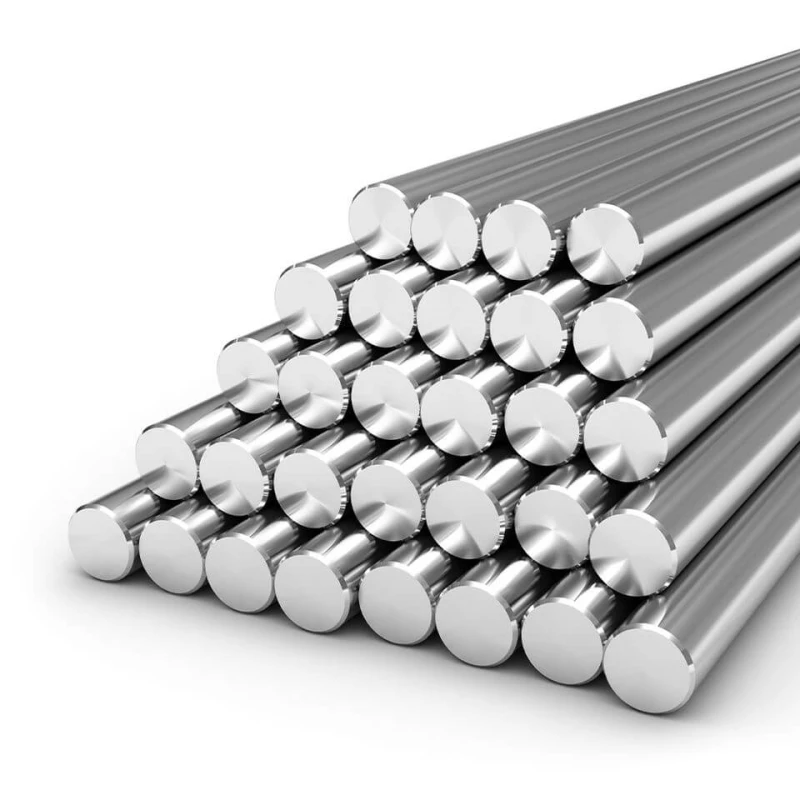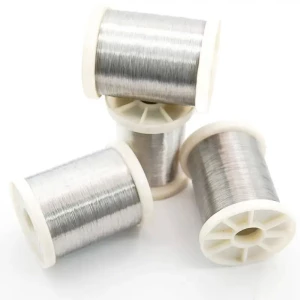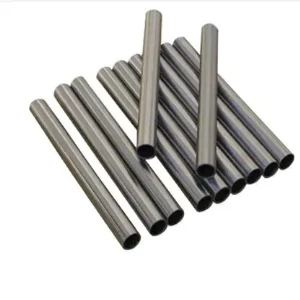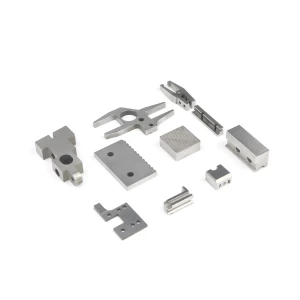Introduction to zirconium alloy:
The zirconium alloy is a solid solution of zirconium or other metals. Zirconium has a very low thermal neutron absorption cross section, high hardness, ductility and corrosion resistance. The main use of zirconium alloys is in the field of nuclear
technology, such as fuel rods in nuclear reactors. Typical compositions of nuclear grade zirconium alloys are more than 95% zirconium and less than 2% tin, antimony, iron, chromium, nickel and other metals added to improve mechanical properties and corrosion resistance.
Zirconium alloy has good corrosion resistance, moderate mechanical properties and low atomic thermal neutron absorption cross section (Zirconium is 0.18 target) in high temperature and high pressure water and steam at 300-400 °C. It has good compatibility with nuclear fuel. It can be used as a core structural material for water-cooled nuclear reactors (fuel cladding, pressure pipes, supports and tunnel pipes), which is the main use of zirconium alloys. Zirconium has excellent corrosion resistance to various acids (such as hydrochloric acid, nitric acid, sulfuric acid, and acetic acid), alkalis, and salts, so zirconium alloys are also used to make corrosion resistant parts and pharmaceutical devices. Zirconium has a strong affinity with gases such as oxygen and nitrogen, so zirconium and zirconium alloys are also widely used as non-evaporable getters in the electric vacuum and bulb industries (see getter materials). Zirconium has excellent luminescent properties and is therefore a flash and pyrotechnic material.
Types of zirconium alloys:
There are two series of zirconium-based alloys produced on an industrial scale: zirconium tin and zirconium. The former is
represented by Zr-2 alloy, and the latter is represented by Zr-2.5Nb alloy. The composition and properties of zirconium and three zirconium alloys are shown in the table. The principle of alloying element selection of zirconium is: one can not significantly increase the thermal neutron absorption cross section of zirconium; the second is to improve the corrosion resistance and strength of zirconium without excessively impairing the process performance. In the zirconium-tin alloy, the comprehensive addition of tin, iron, chromium and nickel (Zr-2 alloy) can improve the strength and corrosion resistance of the material, the thermal conductivity of the corrosion-resistant film, and reduce the sensitivity of the surface state to corrosion; Zr-4 alloy does not contain nickel, and the iron content is appropriately increased. The corrosion absorption of this alloy is only about half of that of Zr-2 alloy. Usually Zr-2 alloy is used in boiling water reactors and Zr-4 alloy is used in pressurized water reactors. In the zirconium-lanthanum alloy, the corrosion resistance of the alloy is best when the amount of niobium added reaches the solid solution limit of α-Zr at the use temperature. The niobium content in the Zr-1Nb and Zr-2.5Nb alloys is higher than the solid solution limit at the use temperature. The excess enthalpy is present in the α-Zr in a supersaturated state, which is detrimental to the corrosion resistance of the alloy, but is much better in the form of the second phase β-Nb. Most of the metal impurity elements in zirconium and zirconium alloys are required to be below 50 ppm, and elements with large thermal neutron absorption cross sections (such as boron and cadmium) should not exceed 0.5 ppm; nitrogen with severe damage to corrosion resistance should not exceed 80 ppm; The strengthening effect, the content of which is generally 800 to 1600 ppm depending on the strength requirement..
| Size | Dia.: 5 mm - 400 mm |
| Material | R60702, R60704, R60705 |
| Standard | ASTM B550, ASTM B351 |
| Surface | Black, Pickling, Sand-blasting, Polished |
| Condition | Cold rolled(Y), Hot rolled(R), Annealed (M), Quenching (C) |
| Shape | Square Bar, Round Bar, Hexagonal Bar, etc. |
| Grade | Element composition (%) < | ||||||||
| Zr+Hf | Hf | Fe+Cr | Sn | H | N | C | Nb | O | |
| R60702 | 99.2 | 4.5 | 0.2 | -- | 0.005 | 0.025 | 0.05 | -- | 0.16 |
| R60703 | 98 | 4.5 | -- | -- | 0.005 | 0.025 | -- | -- | -- |
| R60704 | 97.5 | 4.5 | 0.20~0.40 | 1.0~2.0 | 0.005 | 0.025 | 0.05 | -- | 0.18 |
| R60705 | 95.5 | 4.5 | 0.2 | -- | 0.005 | 0.025 | 0.05 | 2.0~3.0 | 0.18 |
| R60706 | 95.5 | 4.5 | 0.2 | -- | 0.005 | 0.025 | 0.05 | 2.0~3.0 | 0.16 |
Mechanical Properties
| Material | State | Rm (≥)/MPa | Rp0.2 (≥)/MPa | A50mm (≥)/% |
|
Zirconium 702
(UNS R60702)
|
Annealed | 379 | 207 | 16 |
|
Zirconium 704
(UNS R60704)
|
Annealed | 413 | 241 | 14 |
|
Zirconium 705
(UNS R60705)
|
Annealed | 552 | 379 | 16 |
Product test:
Visual inspection, check surface quality, ensuring products are without a single flaw
Ultrasonic Flaw Detection, making sure zirconium rods have no defects inside
Chemical Composition Detection
Mechanical Features testing
Zirconium Chemical Composition
ZHUO HANG XIN has a wide variety of processing equipment which is maintained impeccably to ensure 100% satisfaction. And we provide many value-added services to meet your projects specific needs.
We have more categories for you. lf you can't find the products you want above,just fill in the form and tell us whatproducts you want to import from China.
















